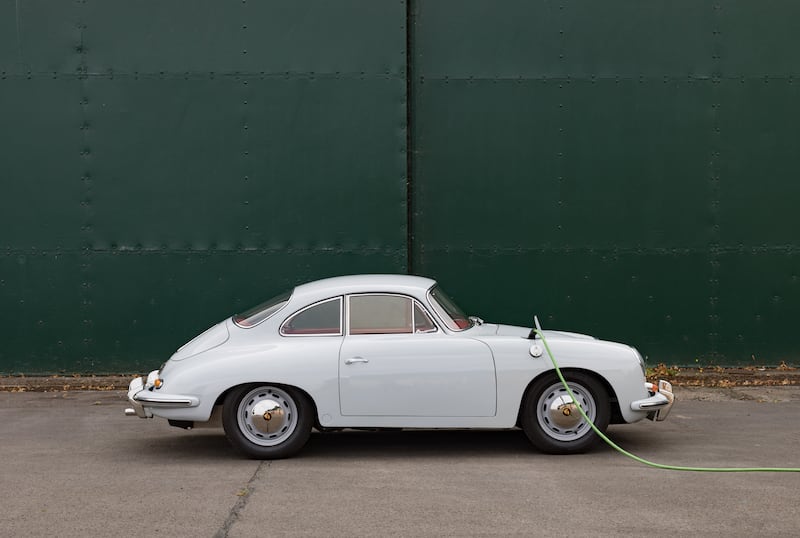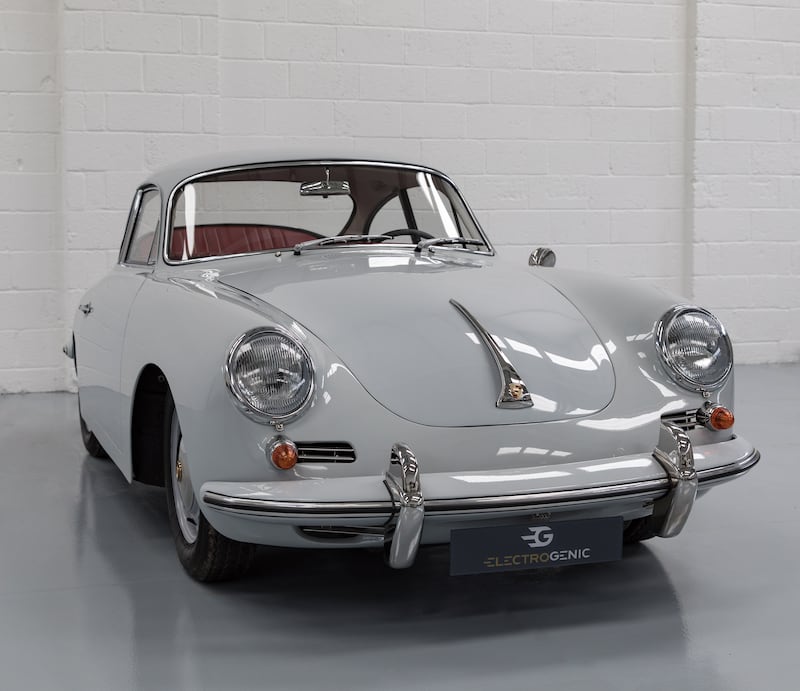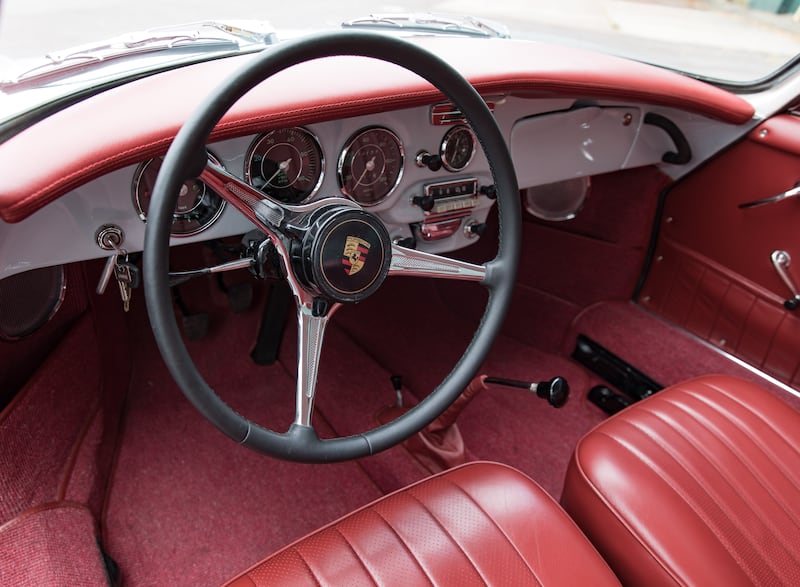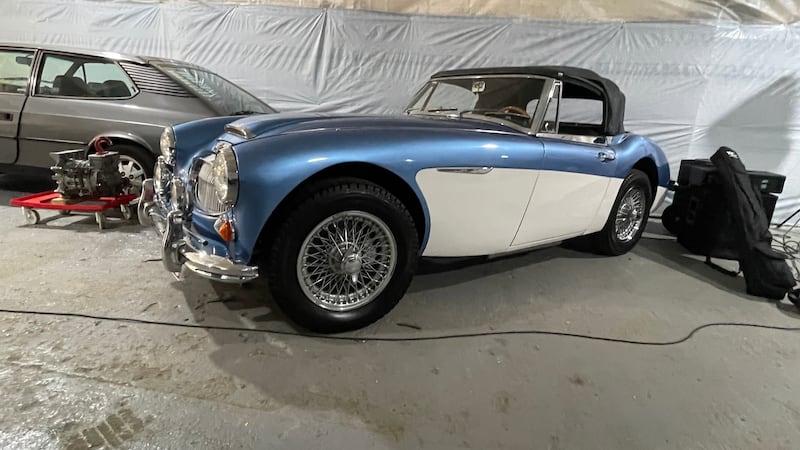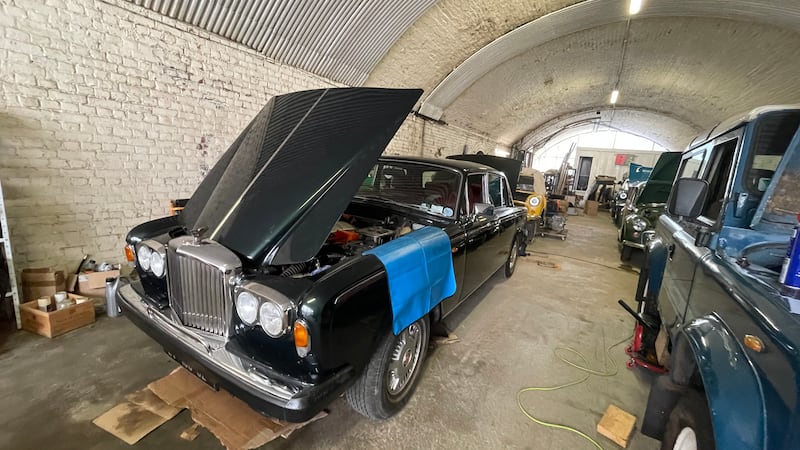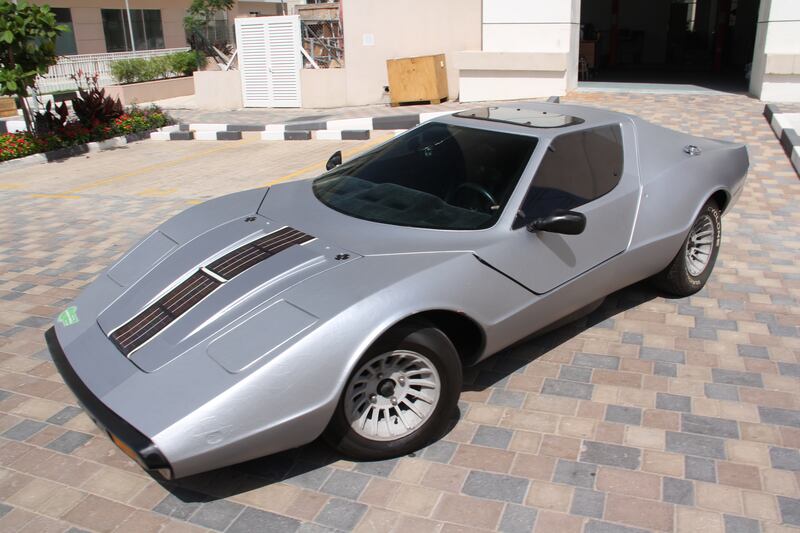I’m staring at a stunning 1964 Porsche 356 C, so perfectly presented it could have just rolled off the production line. The compact proportions and classic silhouette are complemented by an inviting interior featuring red carpeting and scarlet leather upholstery. There’s a pristine metal-panel dashboard, complete with period instrumentation and spindly gear lever.
I turn the key inserted to the left of the steering wheel and nothing happens. No, scratch that. Not quite nothing as there is a low frequency whine coming from the rear, confirming the car is ready to go. What? No bassy chugga-chugga thrum of the ancient flat-four engine in the back?
Come to think of it, there isn’t even any aroma of oil or petrol fumes that you’d normally encounter in a near-60-year-old car, even prior to attempting to get it to run. Which in itself would involve chokes, pumping the gas pedal, repeated cranking of the ignition, and not least a prayer or two.
Clutch down, select third of the four-on-the-floor gearbox ratios, release clutch and still nothing, because I still have my foot on the brake pedal. Not touching the left pedal at all, I slide my right foot over to the throttle and depress, and without any fuss or drama, and with barely an increase in the aforementioned whine, the car moves off.
As you may have guessed, all is not as it seems with this otherwise authentic 356. It has, you see, been converted to run on electric power. Purists may be call it sacrilege, and an unforgivable desecration of a genuine original classic car. But it should be noted that classic car conversions are reversible.
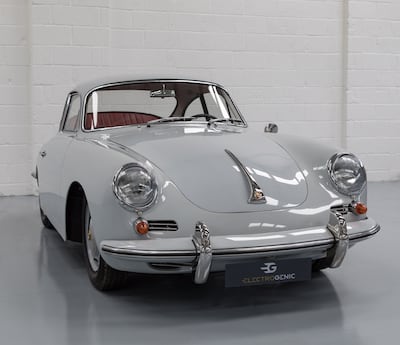
Electrogenic, which converted this Porsche and which aims to “save the world one car at a time”, is at the forefront when it comes to developing its own tech and electric drive systems. However, “retro-electric” pioneers in the UK alone include Electric Classic Cars, 2C-EV, Everrati, Lunaz and London Electric Cars among others.
Matthew Quitter, founder of London Electric Cars, explains what inspired him to start down this outrageous path: ripping out internal combustion engines and replacing them with batteries and a motor.
“I had a little Triumph Spitfire, and driving that is just an absolute joy, except when you come to a stop and your fumes catch up with you, and then you're sitting there looking really cool, but your eyes are watering a little bit and it's stinky,” says Quitter. “When [these cars are] converted to electric, all of a sudden it's serene and tranquil and wonderful.”
He’s describing this as he drives me around London’s historic Parliament Square in one of Britain’s most legendary cars, a Series II Land Rover, now electric, but retaining its transmission and four-wheel drive. Back at his workshop, he points at another British motoring luminary, a Bentley T-Series being worked on.
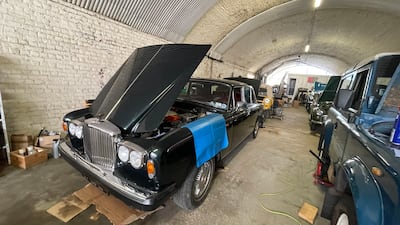
“This is a really good example of some of the pressures that cause someone to do a conversion,” he explains. “The owner has two daughters who don't want to get into a combustion engine car, but this car means a lot to him, and he really wants them to be able to enjoy his passion for it.”
Other cars being worked on during include an Austin Healey awaiting a Nissan Leaf motor and batteries, and a humongous 1966 Lincoln Continental four-door convertible undergoing restoration and set for a Tesla transplant. Both of these are bound for the UAE.
But they won’t be the first classic electric cars in the Emirates. Mohamed Al Musleh, assistant professor at Heriot-Watt University in Dubai, converted an old Volkswagen Beetle nearly a decade ago, in 2012, and later did the same to a Sebring Turbo (1970s kit car). More recently Salman Hussain of FUSE, a start-up in Dubai, converted a classic-shape Beetle to run off Tesla batteries and a Netgain motor. He aims to offer conversions to customers within the next three months.

Converting a car in the UK can range from £16,000 ($21,300) for the Citroen 2CV up to the near £50,000 spent on this Porsche, with higher prices commanded for “turn-key” cars from companies such as Everrati and Lunaz, which most recently announced an Aston Martin DB6/DB5 conversion.
Electrogenic founder Steve Drummond, a former nuclear power plant technician, is a pioneer of renewable energy and actively involved in sustainability initiatives. What fascinates him is the technical challenges of retaining the aesthetics and persona of classics, while actually “making them better”, as opposed to just making them electric.
That makes them more usable and contributes to sustainable transport, he says. “When someone converts their classic car to electric, instead of just being a third car, rarely used, it becomes reliable enough and driveable enough to be used regularly – it takes the place of the second car.”
The carbon footprint of producing new electric cars is significant – recently, Volvo admitted that emissions from making EVs can be 70 per cent higher than petrol models and would take nine years (based on average annual mileages) to offset. The electric car has a far lower carbon footprint during the use phase and a quicker more widespread switch to renewable energy sources would alleviate the disparity. Nonetheless, it validates the case for converting existing cars to electric.
Drummond insists doubters simply need drive his cars in order to be converted themselves. And that’s how I found myself at the wheel of the 356. The 1.6-litre petrol engine has been swapped with a Netgain “Hyper 9” electric motor, producing 120bhp and 173lb ft of torque. This makes it about twice as quick in acceleration from rest to 100 kilometres per hour (about seven seconds). The 36kWh battery gives it a 225km range.
With the exhaust pipe intact on the outside, and the fuel filler converted to take the charging plug (two and half hours for a recharge), the discreet conversion is not apparent inside, either. The rev counter displays motor revs and the fuel gauge shows battery charge. It’s only on opening the glovebox that you encounter a digital readout.
The clutch is only used to engage gears, but not for stopping or going, so it’s a bit like driving a semi-automatic, except that the greater torque enables you to drive it around in third gear all day like a full auto, if you wish. Working the gears has benefits, though; start off in second and you’re grateful that 356 C models were fitted with disc brakes. Take off in first and you’ll be shocked. No road-spec 356 has ever moved this fast.
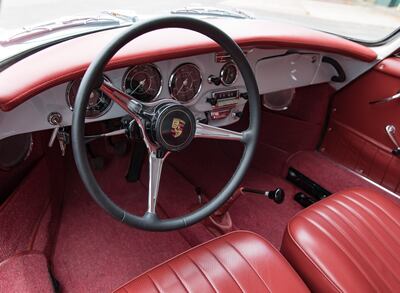
The heavy non-assisted steering, wrestling with the gear change, brakes you have to get on to hard and early, and flimsy lap belts ensure you get the classic car experience. The reliability, performance, and fumeless, soundless drive, confirms its usability. Most importantly, you still find yourself grinning as you chuck this priceless classic around and don’t spare the horses (or should that be electrons?).
Is it pure and original? No. Is it better? Yes. Would I have one? Yes. But I’d go further: adding power steering, uprated brakes and simulated engine noise (oh yes, that can be done) for the full retro-electric restomod experience.
With more stringent emissions legislation, higher fuel costs and environmental calamity upon us, this presents a viable future for those classics we want to keep on the roads, because the rest might just end up in museums.
